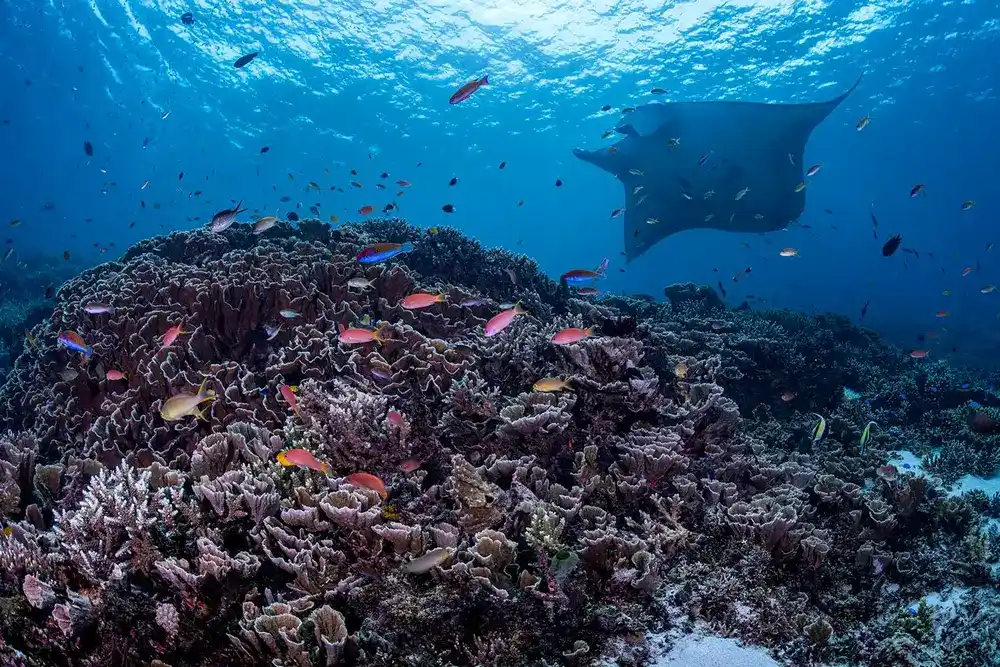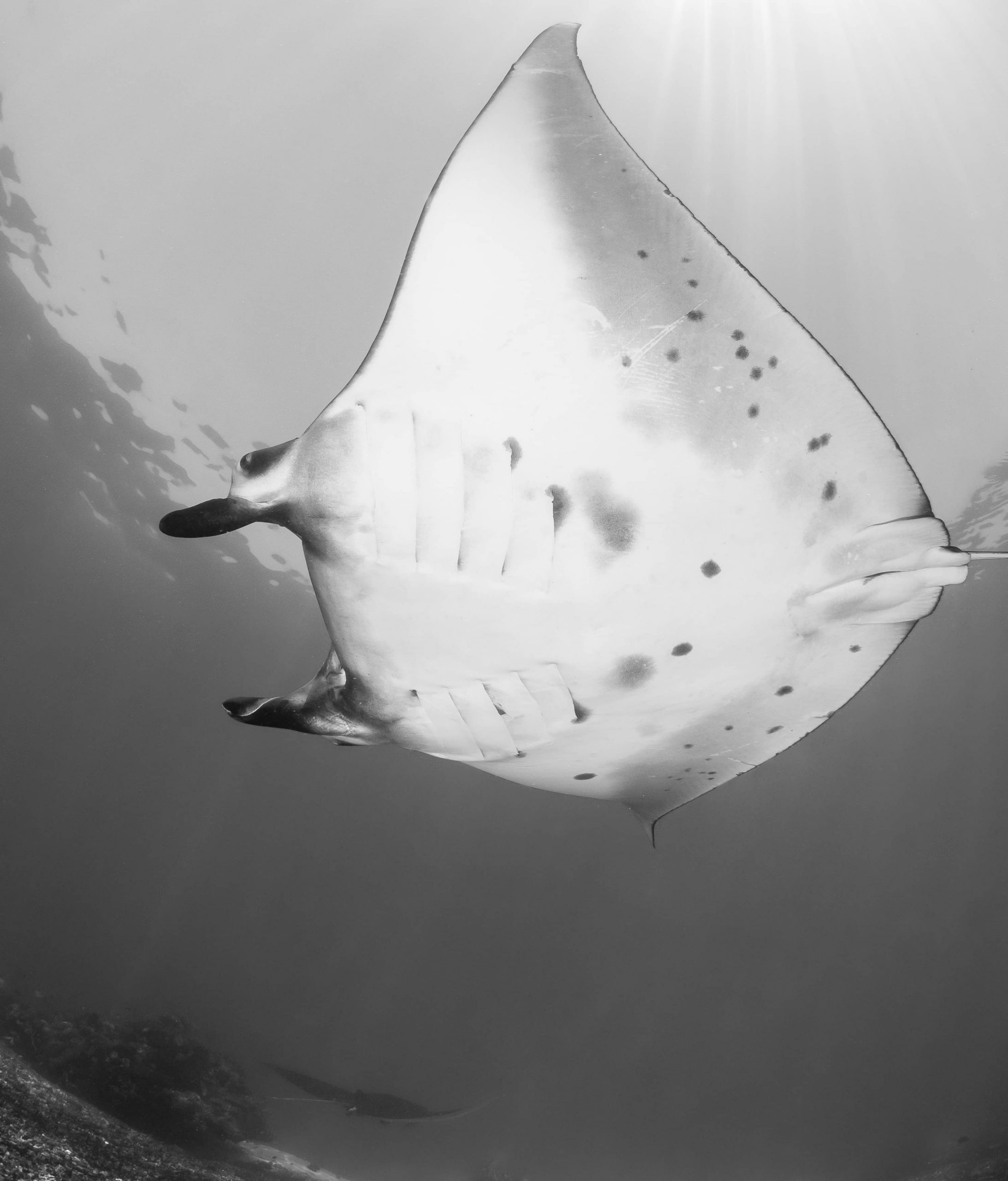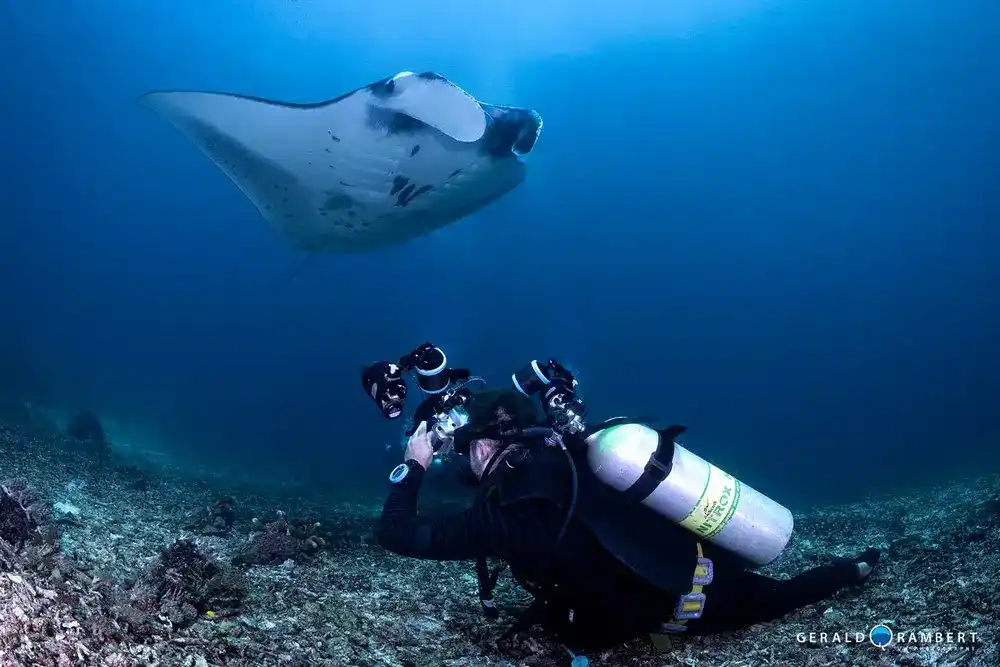Majestic encounters at iconic sites like Mawan and Karang Makassar (Manta Point), available year-round. Seasonal tips, best practices and safety — for an unforgettable experience.
The first sighting is unforgettable — and the next ones too. In Komodo, Mobula alfredi (reef mantas) gather at cleaning and feeding zones, enabling regular encounters. With wingspans up to 5 meters, captivating social behavior, and year-round presence, Komodo is a global hotspot for manta rays.
Higher abundance on central sites. Spectacular cleaning and feeding behavior. February–March: occasional courtship trains.
Water gets clearer and warmer. More juveniles, especially in the North, peaking in July–August.
Whatever your travel dates, we schedule at least one manta site in your trip — weather and conditions permitting.
Shallow and accessible. Famous for cleaning stations: circular hovering above coral heads, social interactions and graceful loops.
Large pebble plateau with coral bommies: conveyor-belt style drifts when the current picks up. Frequent sightings, sometimes in groups.



Cleaner fish remove parasites while mantas hover in place. They can spend hours per day at these stations.
Briefings cover current management, buoyancy and positioning relative to manta fly-paths. We adapt plans to daily conditions.
Our day trips and liveaboards schedule manta sites whenever conditions allow. English-speaking guides on board.
Book your manta experience